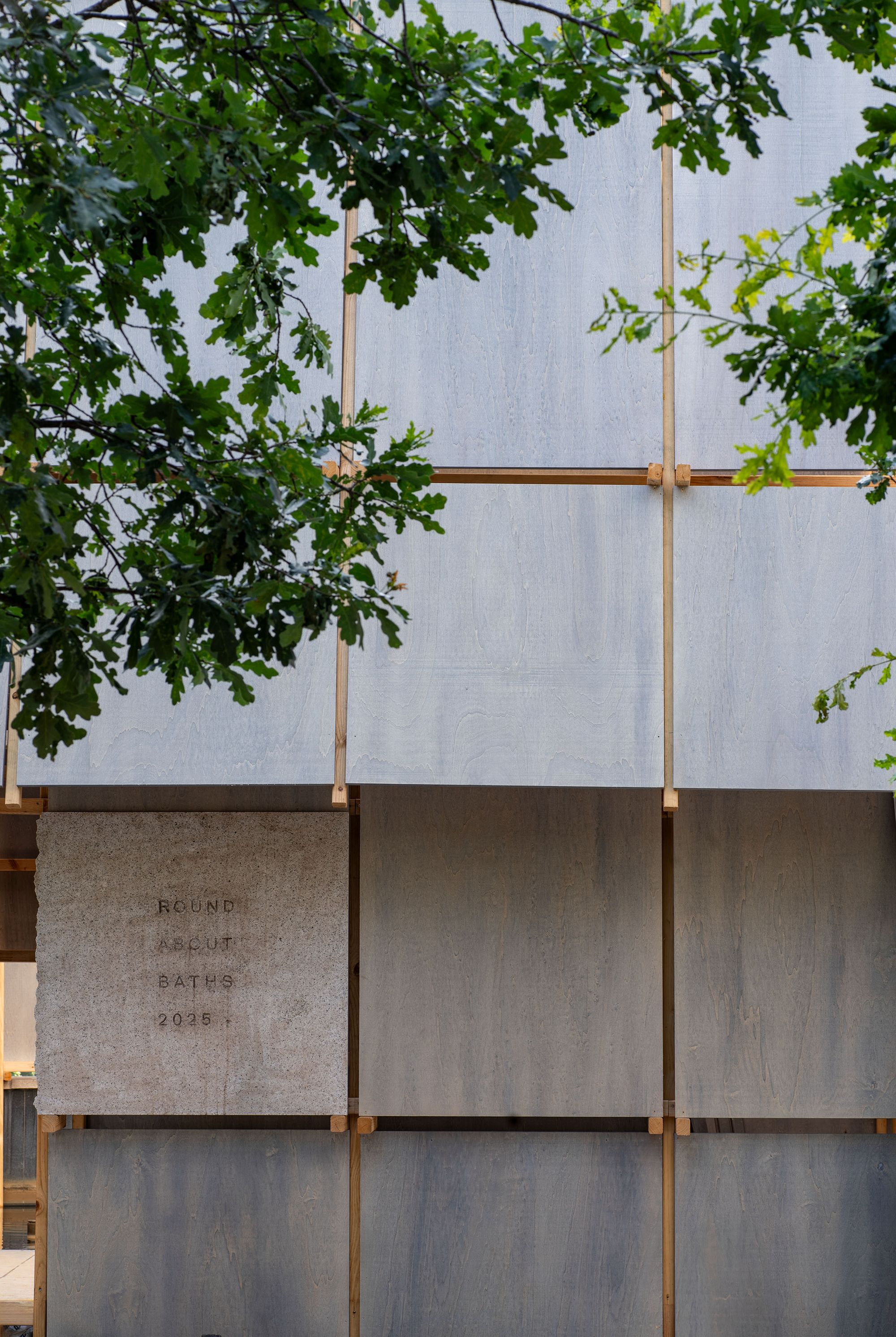
Wooden panels hide the aqueous interior of Roundabout Baths. Photo by Josema Cutillas courtesy of Concéntrico.
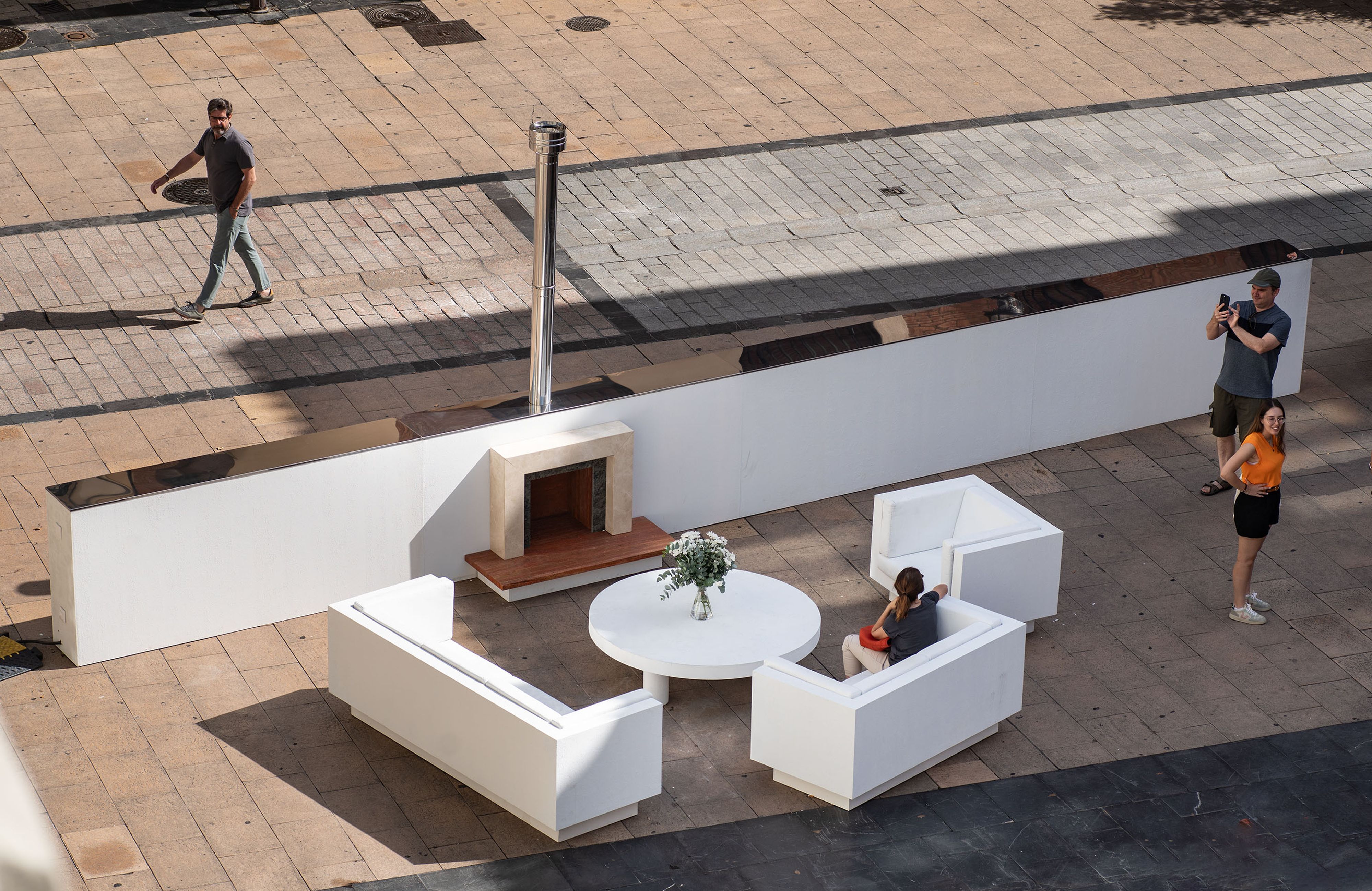
Backstage Fireplace by Sam Chermayeff Office is inspired by a rooftop fireplace designed by Le Corbusier. Photo by Josema Cutillas courtesy of Concéntrico.
In the roster of international architecture and design events — the Venices, Chicagos, Seouls, and Istanbuls — one name stands out because of its almost rural location: Logroño. A three-and-a-half-hour drive from Madrid, in the heart of Spain’s celebrated Rioja wine country, the tiny town has been running an annual architecture festival for the past ten years now. Quiet, charming, and easily walkable, Logroño has none of the grinding urban issues that make city life such a challenge, but it is precisely this engagement with a place some might describe as “provincial” that helps make the festival such a delight.
This summer’s tenth-anniversary edition was no exception, with an international line-up of both established and upcoming names contributing to a program full of playful surprises. Presiding over the event was the spirit of Ugo La Pietra, the radical Italian architect who, in 1970s Milan, declared that “living in the city is feeling at home everywhere,” a slogan he put to the test by reappropriating urban space and street furniture for domestic use. Though the organizers didn’t name him, the “urban laboratory” of Logroño, as they described it, became a place where the commons formed by the streets and squares that residents navigate every day were both joyfully celebrated and cheekily subverted.
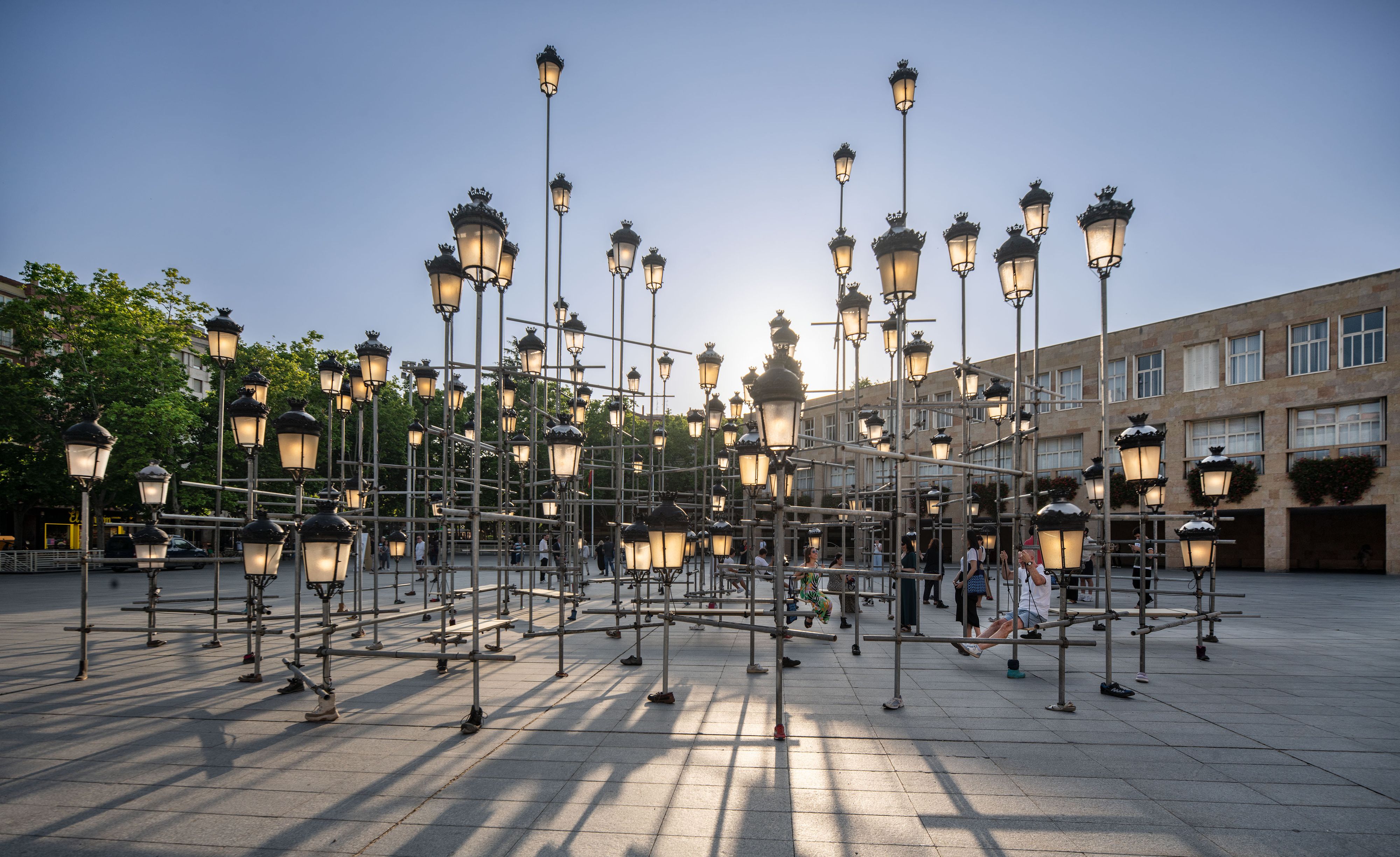
111 Farolas designed by Bayona Studio. Photo by Josema Cutillas courtesy of Concéntrico.
Take, for example, Backstage Fireplace, which Berlin-based Sam Chermayeff Office created for Logroño’s Plaza de San Agustín. Grouped around a low wall fitted with a traditional fireplace (functional, judging by the stainless-steel chimney), armchairs, a sofa, and a coffee table took on the classic living-room configuration. Inspired by the mythic 1931 Surrealist rooftop terrace with a fireplace that Le Corbusier designed for Charles de Beistegui on Paris’s Champs-Élysées, the installation had rather different social aims. Instead of a party-pad amusement for a billionaire’s bored guests, the fireplace and its accoutrements provided the perfect spot for passersby to stop for a convivial chitchat in a square otherwise devoid of public amenities. Indeed, one wonders if there wasn’t a certain irony in choosing precisely this plaza, since it is home to the now-privatized Palacio de Correos (Logroño’s central post office), a former public-service building that currently houses a five-star hotel.
In a similar vein, Catalan office Bayona Studio transformed another forlorn and empty square into a space for public enjoyment with the installation 111 Farolas. The site in question was the vast, arid plaza that Rafael Moneo created in front of his 1981 Logroño Town Hall, an intimidating display of official power. With a light and witty touch that played on ideas of enlightenment, construction, pedestrian zoning, and the fine line between permanence and impermanence, the architects subverted municipal monumentality to ludic ends. By installing a haphazard-looking structure of scaffolding poles that carried swings for both adults and children, Bayona Studio made the square fun for all, encouraging Logroñeses to use what is in reality already theirs. Highlighting the installation’s temporary nature, as though it could walk away, the architects had their scaffolding poles wear all kinds of footwear — sandals, sneakers, walking boots, gumboots, etc. — and crowned them with street lamps — 111 in all — of the traditional kind found everywhere in the town’s historic center. Catching the sun by day and glowing like a funfair at night, these farolas paid poetic homage to a public service that is essential to the safety of nighttime pedestrians, namely street lighting.

Monumental Splash by SalazarSequeroMedina is one of two public installations that construct architecture around interaction with water. Photo by Josema Cutillas courtesy of Concéntrico.
Though perhaps not essential, but certainly key to making urban life more agreeable, the public bench has been a staple of towns and cities since the mid-19th century. London-based designers Soft Baroque also adopted a funfair approach with their Dancing Bench, an innocent-looking steel-and-timber three-seater that, on closer inspection, turned out to pivot on all its legs. After a good old push from the feet and buttocks, users could get it rotating nicely, a movement the designers likened to a rocking chair or a hammock, although it required considerably more effort. Indeed, unlike the domesticity of rockers and hammocks, whose gentle swaying lulls the user to sleep, Dancing Bench turned the passive act of sitting into something very active, and as such constituted the perfect solution for those who come over all fidgety when watching life go by in Logroño’s parks.

The walled-in, public pool recalls ancient Roman Empire pools, part of public works. Where those brought hygiene to the public, Roundabout Baths brings recreation. Photo by Josema Cutillas courtesy of Concéntrico.

Wooden panels hide the aqueous interior of Roundabout Baths. Photo by Josema Cutillas courtesy of Concéntrico.

Overhead view of Roundabout Baths by Leopold Banchini. Photo by Josema Cutillas courtesy of Concéntrico.
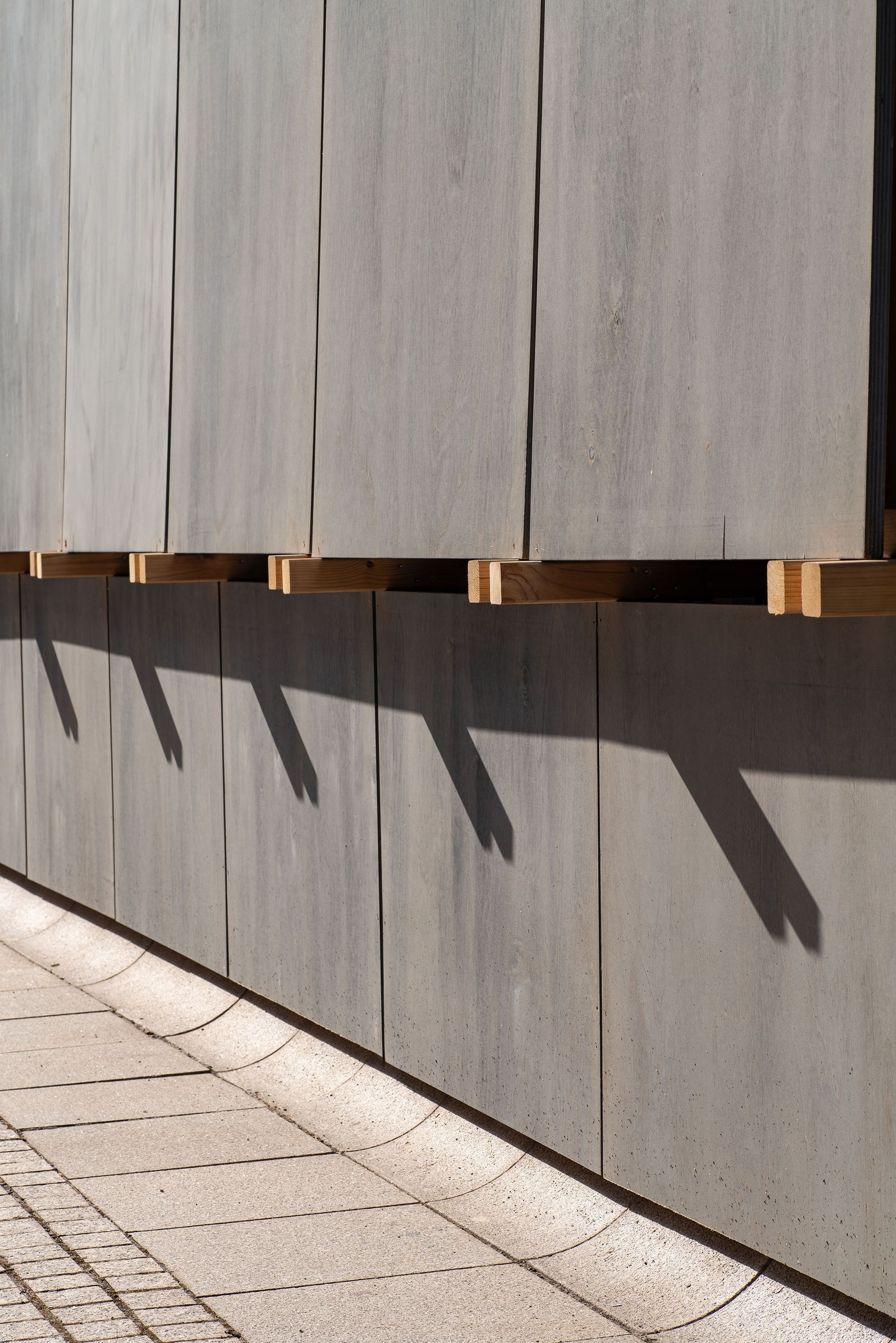
Banchini kept all panels intact so they could be reused once the installation was disassembled. Photo by Josema Cutillas courtesy of Concéntrico.
Another non-essential — at any rate these days, thanks to city water — yet typical urban delight is the public fountain. That said, when they’re of the cheesy or bombastic variety, fountains are not always such a boon. Swiss architect Leopold Banchini appropriated just such an unlovely example on Logroño’s Avenida Gran Vía Rey Juan Carlos I — as its name suggests, a major automobile artery — by building the installation Roundabout Baths. Constructed on top of a pool and fountain at one end of a traffic island, the timber structure dealt cleverly with the sponsor-supplied wood panels, leaving them intact for full reuse, and rendered the public surprisingly intimate by enclosing the pool, allowing for a refreshing jacuzzi-style dip in a water feature that is otherwise a mere urban backdrop. Further up the avenue, the commons were again made to work a little harder with ¡Todxs a la mesa! (rough translation: “Everyone at the Table!”) by Barcelona-based h3o architects. Consisting of a giant, zigzagging, 30-meter-long table fashioned from standardized elements produced by street-furniture manufacturer Benito Urban, it played host to a community paella during the festival, bringing together locals and passersby under built-in beer-garden-style light garlands that ensured nocturnal conviviality.
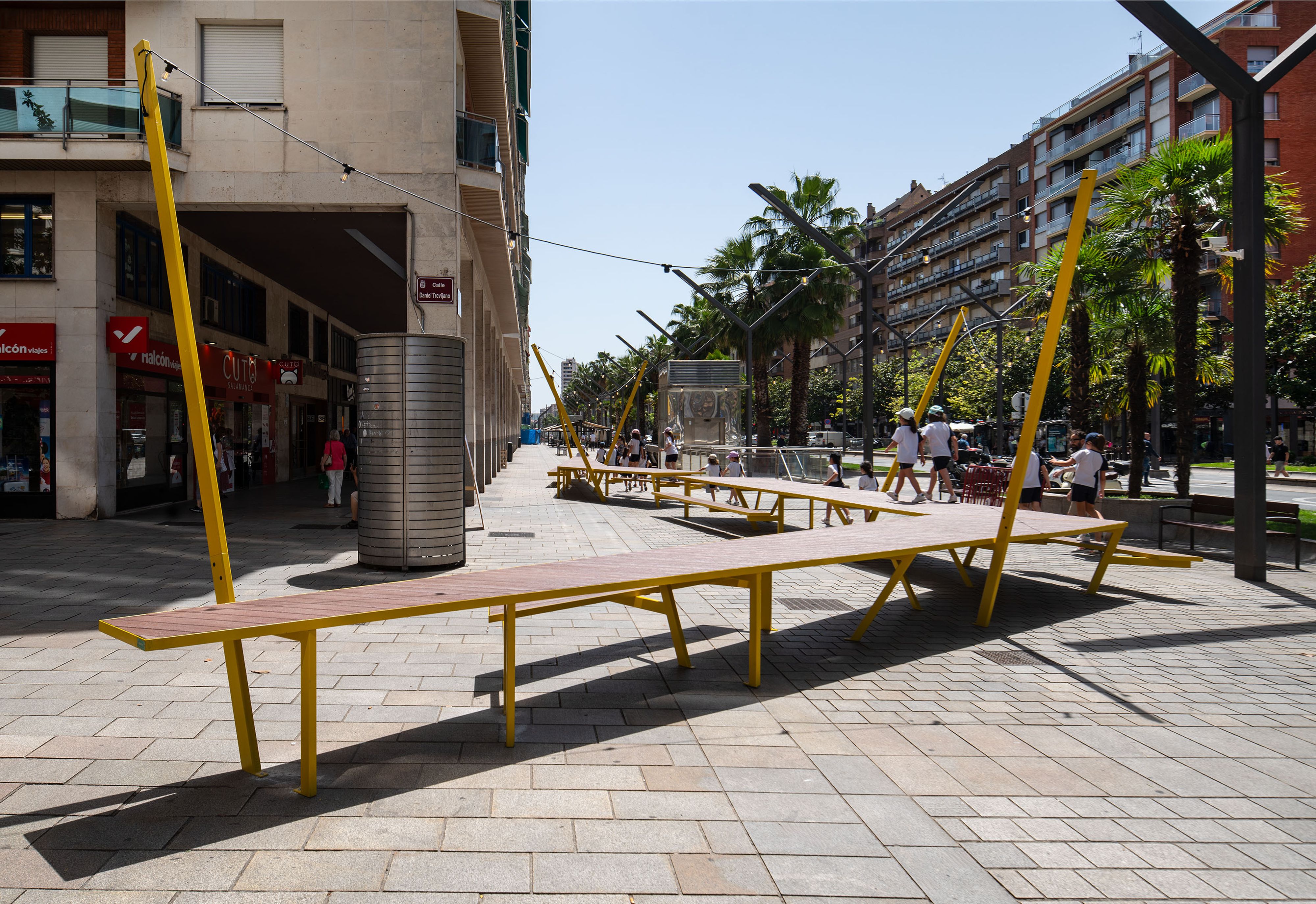
¡Todxs a la mesa! by h30 architects manufactured by Benito Urban. Photo by Josema Cutillas courtesy of Concéntrico.
Of all the interventions, the most poetic was perhaps A Third of Life, the transformation by Finnish artist duo IC-98 and Helsinki-based Suomi/Koivisto Architects of a ruined apartment building at Calle Marqués de San Nicolás 144/146. As even the most casual visitor to Spain will have noticed, the problem of derelict buildings plagues all the country’s historic centers, although Logroño is relatively unaffected in comparison to other towns and villages. Here, the artist-architect collaboration turned the abandoned building into a secret garden that took the form of a series of rooms open to the sky. A hidden green sanctuary that helps mitigate the heat-island effect of Logroño’s dense fabric, A Third of Life features species chosen for their attractiveness to pollinators, as well as for their ability to survive with minimal maintenance and watering. The plants, which include poppies and lavender, also evoke sleep and rest, since the intervention was conceived as a temporary temple to Gaia, Morpheus, and Hypnos, a shrine where the earthworm is worshipped and the oneiric extolled.
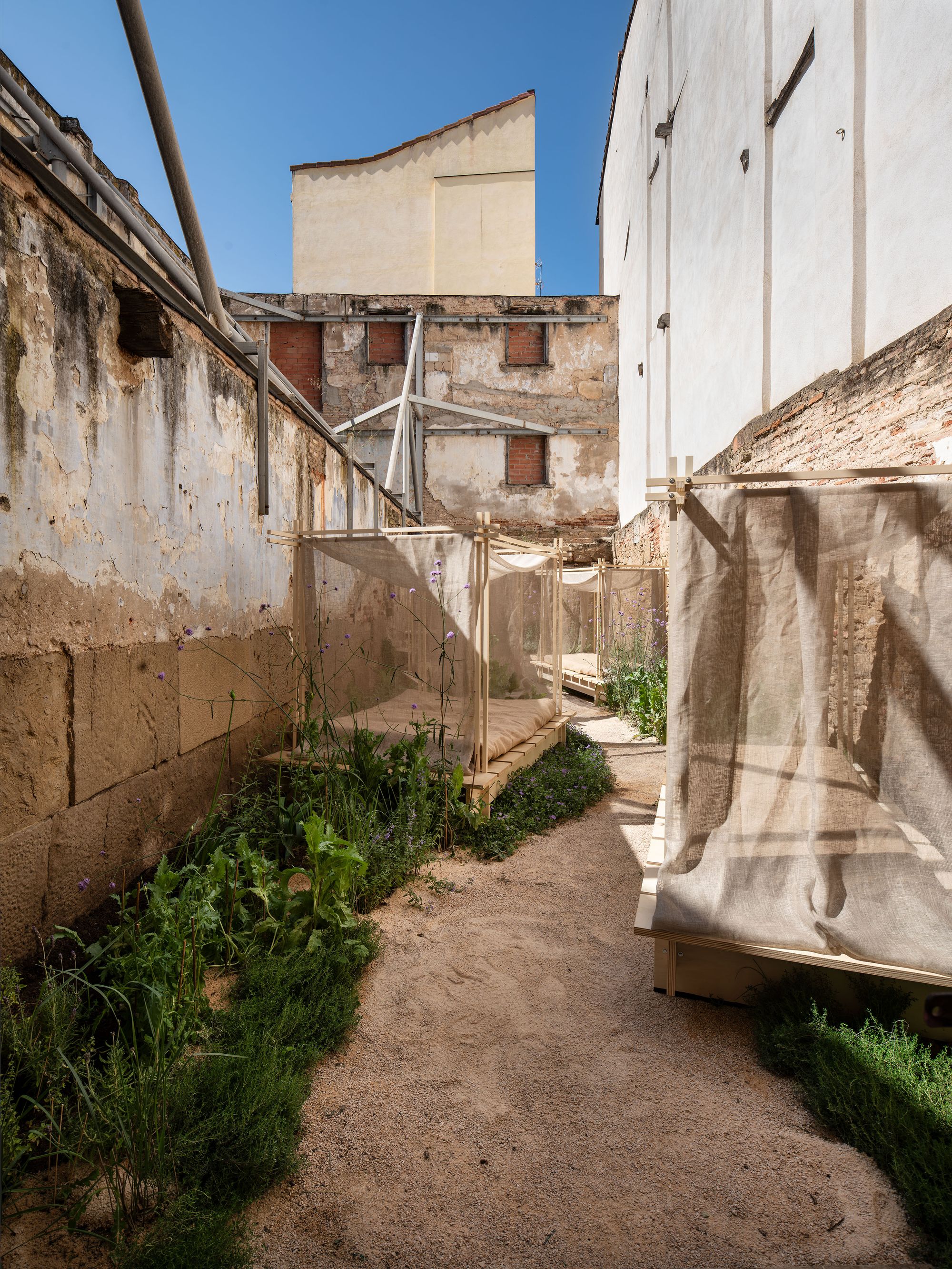
A Third Life by IC-98 and Suomi/Koivisto Architects. Photo by Josema Cutillas courtesy of Concéntrico.
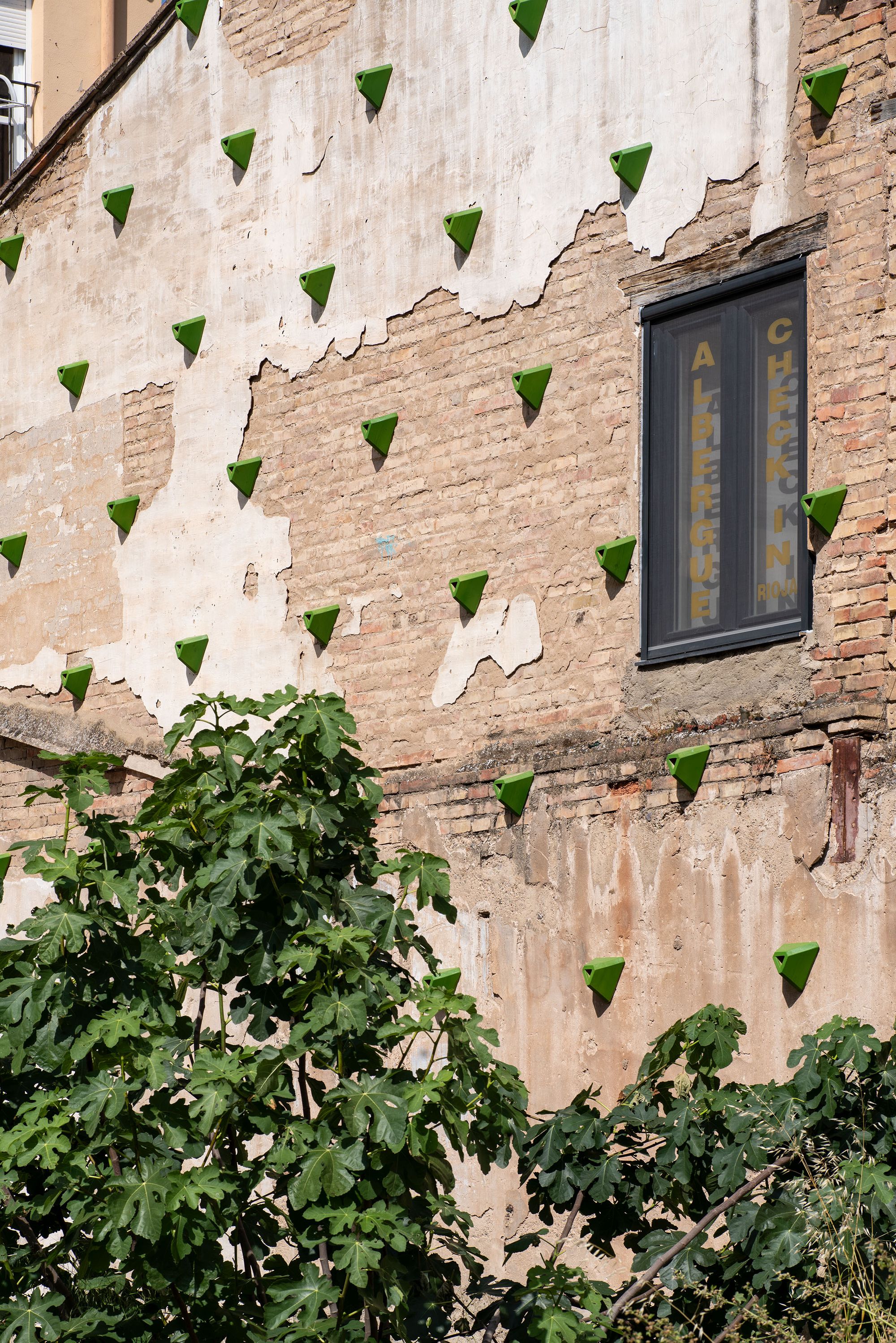
Picos by Chris Kabel. Photo by Josema Cutillas courtesy of Concéntrico.
These projects are just a few of the highlights from the 23 interventions that made up this year’s festival. Following the success of the 2025 edition, the mayor has decided that three will become permanent: the aforementioned A Third Life; Berlin-based Borneo architecture’s The Battle of the Planetary Gardener, which turns an abandoned lot into an opportunity for biodiversity, with local schoolchildren becoming the guardians of the wild flowers they seed there; and Rotterdam-based product designer Chris Kabel’s Picos, a series of birdhouses installed on blank party walls. Where, half a century ago, La Pietra’s interventions sought to challenge the suffocating consumerist values of what he considered an authoritarian society, today the emphasis is on finding remedies to the environmental and biodiversity crisis. But La Pietra’s idea of getting urbanites more actively involved in their everyday environment persists, albeit in a less anarchical way. Indeed, for the festival’s director, Logroño-born Javier Peña Ibáñez, the tenth-anniversary edition marked a shift in approach, with “citizens, more than ever, embracing the project ... It’s not only about architecture or physical transformation — social transformation is fundamental.” In this respect, the 2025 festival certainly made a convincing plea for a profession — architecture — that is in danger of disappearing into irrelevance by engaging residents and passersby with the myriad ways, both big and small, that urban design can make a difference in our everyday lives.

The Battle of the Planetary Gardener by Borneo. Photo by Josema Cutillas courtesy of Concéntrico.